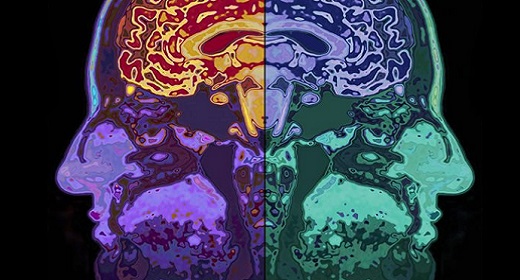by Robin Stern: Gaslighting, explained…

The term has been everywhere since Donald Trump’s inauguration, so much so that the Oxford Dictionaries named it one of the most popular words of 2018: gaslighting.
It hasn’t just seeped into our lexicon. It is now part of how we acquire information. Anderson Cooper’s nightly news roundup, Anderson Cooper 360, has a special series called “We’ll Leave the Gaslight On,” dedicated to the lies of politicians.
In the vernacular, the phrase “to gaslight” refers to the act of undermining another person’s reality by denying facts, the environment around them, or their feelings. Targets of gaslighting are manipulated into turning against their cognition, their emotions, and who they fundamentally are as people.
If a wife tells her husband that he is shirking child care responsibilities and he responds by refusing to acknowledge that it’s even happening, he is gaslighting her.
Maybe we’re all being gaslighted by the president or other political figures. But it’s likely there’s someone much closer to us doing the job. Most of us have been gaslighted at some point in our lives, making it important to learn how to spot the technique, shut it down, and minimize the psychological impact on our daily lives. When left unexamined, gaslighting can have a devastating and long-term impact on our emotional, psychological, and sometimes physical well-being.
I’m a licensed psychoanalyst and the associate director of the Yale Center for Emotional Intelligence, and over the years, I have spoken with hundreds of people experiencing gaslighting in their personal lives. It’s why I coined the term “gaslight effect” in my 2007 book, referring to the long-term consequences of experiencing repeated gaslighting over time. My book was rereleased earlier this year when gaslighting became a cultural phenomenon — specifically, the constant lies from the Trump administration while his supporters trumpeted his fast and loose twisting of reality.
The phrase originated from a 1938 mystery thriller written by British playwright Patrick Hamilton called Gas Light, made into a popular movie in 1944 starring Ingrid Bergman and Charles Boyer. In the film, husband Gregory manipulates his adoring, trusting wife Paula into believing she can no longer trust her own perceptions of reality.
In one pivotal scene, Gregory causes the gaslights in the house to flicker by turning them on in the attic of the house. Yet when Paula asks why the gaslights are flickering, he insists that it’s not really happening and that it’s all in her mind, causing her to doubt her self-perception. Hence the term “gaslighting” was born.
The term appeared in academic discourse before it hit the mainstream. Its use goes back as far as 1980 in academic journal articles about women’s socialization. Experts postulated that women were trained to long and hunger for relationships and connection, a conditioning that made them vulnerable to exploitation of their attachment, which is exactly what gaslighting is.
It’s unclear when exactly the term seeped into the world of popular psychology, but it’s now frequently employed in couples counseling and self-help books to describe a specific type of toxic relationship.
Gaslighting in interpersonal relationships often develops or builds on an existing power dynamic. While it’s most common in romantic settings, gaslighting can happen in any kind of relationship where one person is so important to the other that they don’t want to take the chance of upsetting or losing them, such as a boss, friend, sibling, or parent. Gaslighting happens in relationships where there is an unequal power dynamic and the target has given the gaslighter power and often their respect.
The question remains, though: How does someone become a gaslighter? How can you spot when it happens to you? And once you identify it, how do you deal with it?
The gaslight tango
Years ago, I worked with a couple, Janine and Dan, both high achievers in their 40s living in Philadelphia. (Their names have been changed to protect their identities.) The couple was enjoying their newlywed life until the gaslighting started. Dan would frequently comment about how Janine didn’t have anything to contribute to their financial picture. At first, Janine didn’t take the criticism seriously — even though she admittedly wasn’t great at saving, she was making a great salary and contributed her fair share. She dismissed Dan’s barbs as “cute” and part of their banter.
When they had kids and decided that Janine would stay home and care for them, Dan took a higher-paying job that involved a lot of travel. That’s when Janine began to notice that he was growing distant, a claim he immediately dismissed. She also noticed that Dan would take out large withdrawals from their joint account while he was on the road, even though he would insist that money was “tight” when he was at home.
She confronted Dan, believing he could be having an affair, which was met with Dan’s insistence that she was “imagining things.” When Janine pushed back, he kept repeating, “You don’t know anything about money. Hasn’t that already been established?”
She became increasingly anxious about money, believing that it wasn’t her “strong suit,” and whenever she brought up anything about Dan’s expenditures, he would respond with contempt and tell her she was a disaster with money.
Over time, Janine’s belief that an affair was occurring strengthened, yet she stopped asking, which made her more anxious. But she somehow felt less and less entitled to knowing anything about his life — after all, she really was a nightmare with money. They stopped couples therapy, claiming that the cost was too high.
The last time I heard from Janine, Dan had admitted to being involved in another relationship. Janine wondered if it was her fault by being such a “pain” to him about money.
I witnessed situations like Janine and Dan’s over and over again in my practice. In many cases, the gaslighting occurred over both accurate accusations (Dan was spending a lot of money on the road) and emotional complaints (Janine noticed that Dan was distancing himself).
The latter is an important gaslighting technique: Undermining a partner’s emotions and feelings is a way to deny their reality. Continuous invalidity of how the other partner feels about a situation is just as effective as saying their perceptions are wrong. The emotional chopping away during those moments has the effect of convincing the other person that they could be imagining or “making up” scenarios that don’t exist, when in all reality, what that person is feeling or experiencing is real.
As Matthew Zawadzki, PhD, noted in his 2014 article on the topic, gaslighting techniques “radically undermine another person that she has nowhere left to stand from which to disagree, no standpoint from which her words might constitute genuine disagreement.”
What turns us into gaslighters?
For gaslighters like Dan, the technique is a way to control the moment in the relationship, to stop the conflict, to ease some anxiety and feel “in charge” again. It’s a way for someone to deflect responsibility and to tear down someone else, all the while keeping the other person hooked, especially if what they are hooked on is the desperate need to please another person — or prove that person wrong.
People aren’t born gaslighters like they are born introverts or extroverts. A gaslighter is a student of social learning. They witness it, feel the effects of it, or stumble upon it and see that it is a potent tool. It’s a cognitive strategy for self-regulation and co-regulation. To be frank, it works.
The gaslighter may not even know he is doing anything strategic or manipulative. He lacks self-awareness and may just think he is expressing himself directly, or is prone to unflinching honesty, saying it “like it is.”
For example, if a gaslighter’s partner asks where he’s been when he comes home at midnight, a gaslighter might accuse their partner of caring too much about punctuality, then justify it to themselves by asking, “What’s wrong with telling someone there’s something wrong with them?” It’s his way of making sense of why his partner is upset with his lateness and to put the conversation, and himself, to bed.
Gaslighters are people, too. For many, gaslighting could be a bad habit picked up from the relationships they grew up around. If a gaslighter’s partner, friend, or parent is willing to do the hard work of changing the way they argue or interact with them, change is possible. But it can be difficult to achieve this if they continue to buffer you from your own reality.
How do you recognize that gaslighting is happening?
Take a look at the list below. If any part of the list resonates with you, you may be involved in a gaslighting relationship and need to look further.
- You ask yourself, “Am I too sensitive?” many times per day.
- You often feel confused and even crazy in the relationship.
- You’re always apologizing.
- You can’t understand why you aren’t happier.
- You frequently make excuses for your partner’s behavior.
- You know something is wrong but you just don’t know what.
- You start lying to avoid put-downs and reality twists.
- You have trouble making simple decisions.
- You wonder if you are good enough.
While all of these symptoms can occur with anxiety disorders, depression, or low self-esteem, the difference with gaslighting is that there is another person or group that’s actively engaged in trying to make you second-guess what you know is true. If you don’t typically experience these feelings with other people but do with one particular individual, then you might be a victim of gaslighting.
Some common phrases you might hear from your gaslighter are:
- You’re so sensitive!
- You know that’s just because you are so insecure.
- Stop acting crazy. Or: You sound crazy, you know that, don’t you?
- You are just paranoid.
- You just love trying to throw me off track.
- I was just joking!
- You are making that up.
- It’s no big deal.
- You’re imagining things.
- You’re overreacting.
- You are always so dramatic.
- Don’t get so worked up.
- That never happened.
- You know you don’t remember things clearly.
- There’s no pattern. Or: You are seeing a pattern that is not there.
- You’re hysterical.
- There you go again, you are so ungrateful.
- Nobody believes you, why should I?
In what context are you hearing these phrases? Typical triggers that create a stressful environment that can lead to gaslighting include topics such as money, sex, your families of origin, or habits you came into the relationship with.
It’s also worth noting that in my practice, the gaslighter is typically a man and the gaslightee is typically a woman. In my clinical experience, many women are socialized to doubt themselves and continually apologize for disagreeing or upsetting their partners. Men are not.
What to do if you’re getting gaslighted
It can be excruciatingly difficult to pull oneself out of a gaslighting power dynamic like the one Janine was experiencing. But it is possible. The antidote to gaslighting is greater emotional awareness and self-regulation — both the knowledge and the practice.
Using these emotional skills, gaslightees come to learn (or accept if they already knew and were caused to forget) that they don’t actually need anyone else to validate their reality, thereby building self-reliance and confidence in defining their own reality. They will also learn that is possible to manage those uncomfortable feelings of standing in their own certainty in opposition to a gaslighter. This can be especially challenging if the gaslightee is a victim of abuse and requires a significant shift in mindset and skills through therapy.
Here are steps that have helped my patients and my friends over the past two decades:
1) Identify the problem. Recognizing the problem is the first step. Name what is going on between you and your spouse, friend, family member, colleague, or boss.
2) Sort out truth from distortion. Write down your conversation in a journal so you can take an objective look at it. Where is the conversation veering off from reality into the other person’s view? Then after you look at the dialogue, write down how you felt. Look for signs of repeated denial of your experience.
3) Figure out if you are in a power struggle with your partner. If you find yourself having the same conversation over and over again and can’t seem to convince them to acknowledge your point of view, you might be getting gaslighted.
4) Engage in a mental exercise to encourage a mindset shift: Visualize yourself without the relationship or continuing it at much more of a distance. Importantly, cast the vision in a positive light, even if it causes you to feel anxiety. Think down the road when you will have your own reality, social support, and integrity.
5) Give yourself permission to feel all your feelings. Accept and acknowledge that what you feel is okay. I recommend tracking your feelings. Consider trying the Mood Meter app that Marc Brackett and I developed at the Yale Center for Emotional Intelligence; it’s an easy way to facilitate your learning about your emotions and track your patterns, allowing you to learn what triggers your feelings and gives helpful strategies to shift your moods.
6) Give yourself the okay to give something up. Part of what makes it painful and challenging to leave a gaslight relationship is that the gaslighter may be the one “someone” you have committed to, such as your best friend, your mom, your sister or brother. It’s okay to walk away from toxicity, regardless of the source.
7) Talk to your close friends. Ask them if you seem like yourself and do a reality check on your spouse’s behavior. Ask them to be brutally honest.
8) Focus on feelings instead of right and wrong. It’s easy to get caught up in wanting to be right or spend endless hours ruminating about who’s right. But determining who is right and wrong is less important than how you feel — if your conversation leaves you feeling bad or second-guessing yourself, that’s what you need to pay attention to. Having a sense of psychological and emotional well-being in a relationship is more important than who is right or wrong in any conversation.
9) Remember that you can’t control anyone’s opinion, even if you are right. You may never get your friend or your boss or your partner to agree that you aren’t too sensitive or too controlling or too anything. You need to let go of trying, as maddening as this can be. The only person whose opinion you can control is your own.
10) Have compassion for yourself. This is really hard even when you are not in a compromising dynamic. But when you are not feeling confident and strong, it’s even harder to give yourself the benefit of the doubt, kindness, and love. It will be a healing influence and help you move forward in your decision making. Now is a time for self-care.
Gaslighting is not the same as sensitivity
It’s important to separate gaslighting from genuine disagreement, which is common, and even important, in relationships. Not every conflict involves gaslighting, and, of course, there are healthy and helpful ways to resolve conflicts. Gaslighting is distinct because only one of you is listening and considering the other’s perspective and someone is negating your perception, insisting that you are wrong or telling you your emotional reaction is crazy/ dysfunctional in some way.
Nor are victims of gaslighting just being overly sensitive. People can be more susceptible to emotional harm than others for a variety of reasons, but gaslighting isn’t about individual personality differences. It’s about knocking one’s understanding of reality off balance.
One couple I counseled, Larry and Dana, came to me because Dana was uncomfortable that Larry had started hanging out late into the night with friends. But when Dana expressed that his actions made her feel like he was choosing other people over her, Larry responded by denying her feelings and denying that he was even staying out all that late.
If Larry had affirmed Dana’s reading of the situation and responded that he wanted to strengthen his friendships or that he felt Dana was distancing herself from him and that’s why he was spending more time with his friends, he wouldn’t be gaslighting. (Note that being affirmed doesn’t mean that someone is telling you that you’re always right; that’s a form of gaslighting, too.)
Even if you have been gaslighted — and make no mistake, it is a form of abuse — that doesn’t mean that things can’t be remedied. For one, through increased emotional awareness and learning to identify the gaslighting, you can learn to validate yourself. When others challenge your perception, ignore them. It’s the self-doubt that is so crippling in gaslighting.
In the film Gas Light, Paula, now realizing that Gregory has been manipulating her, turns the tables on him. In the final scene, Gregory has been tied to a chair by police. When Paula enters the room, he instructs her to get a knife and cut him loose. But Paula gaslights him by pretending that she is too mentally ill — a reality that he has constructed for her — to carry out his instructions.
You are the architect of your own reality. If you’re looking at the beams and walls and telling yourself, “Wait, I know this just isn’t true,” then the gaslight might be on.
















































